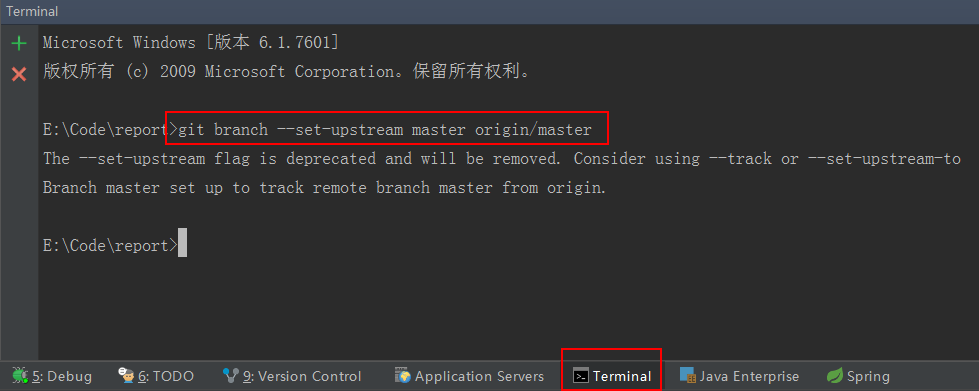

In your case, you have made other modifications, perhaps mistakes. # Verificando a ligacao `master` -> `origin/master` In fact, you can supply it on any later push, and it will set or change the upstream at that point. So you should supply -u on the first push. Nothing to commit, working directory clean 3 If you run your first git push as git push -u origin solaris i.e., if you add the -u flagGit will set origin/solaris as the upstream for your current branch if (and only if) the push succeeds. (use "git branch -unset-upstream" to fixup) Your branch is based on 'origin/master', but the upstream is gone. $ echo "txt" > file.txt & git add file.txt & git commit -m "Initial commit" # Criação do primeiro commit, necessario para ter um `git status` normal.

git branch -u origin/branchName or git branch.
Warning: You appear to have cloned an empty repository. git pull origin master To push your changes into your remote repo, execute the git pushInitialized empty Git repository in /tmp/remote.git/

$ mkdir remote.git & cd remote.git & git init -bare & cd. Example: # Criação d'um repository remoto When you create a remote repository ( git init -bare ), it has no branch but when you clone the remote into a local repository, the master branch has an upstream link to origin/master, even if origin/master does not yet exists. Git branch master -set-upstream-to=origin/master To summarize, -unset-upstream just deletes a link locally, without deleting any data. Also, git status will no longer show the divergence between yo remote local branch. The consequence of this is just that in a git fetch|pull|push, you will have to manually need the local branch yo remote branch parameters to make the connection. Answer:ġ/ Push to create the remote branch, then create the missing link: git push origin masterĢ/ Break the local link between master and origin/master : git branch -unset-upstream When I create a new branch locally and want to push it, setting the upstream fails: git push -set-upstream origin my-new-branch (the operation just hangs) Steps to reproduce git checkout -b my-new-branch echo 'foo' > file.txt gi. So I want to understand what this -unset-upstream and why it asks me for it. Why do I need to run this -unset-upstream ? What does this command mean? Did I do something wrong in the previous steps? Afterwards the branches end up working out, but I don't like to do things randomly. (use "git branch –unset-upstream" to fixup)" "Your branch is based on 'origin/master', but the upstream is gone. Now I do a branch called test, and I do add/commit/push.Īnd now here's what I wanted to ask: when I go back to the master branch, the message comes up: Then I clone it locally, create the remote (remote), create a file teste.php and then add/commit/push. # and have 2 and 3 different commits each, respectively.I created a project and let it hosted remotely. withlin changed the title > Thanks for the feedback, I can see you are on the latest jx. # Your branch and 'origin/development' have diverged, Git tells you about this right in the output for "git status": $ git status This information helps tremendously in staying up-to-date. (b) if there are 4 commits on the remote upstream branch which you haven't pulled yet, then your local branch is "4 commits behind" its upstream branch.

(a) if you have 2 commits in your local repository which you haven't pushed to the remote yet, then your local branch is "2 commits ahead" of its upstream branch. We can use git push which will only when the user has the write access to send our work to the upstream from which we have cloned which will be origin remote. Git can now also tell you about unsynced commits which you haven't pushed or pulled, yet. With an upstream branch set, you can simply use the shorthand commands "git pull" and "git push" - instead of having to think about the exact parameters like in "git push origin development". This relationship is very helpful for two reasons:
Let's also say that you've set the remote "origin/development" as its upstream branch. The easiest way to set an upstream branch is to use the '-set-upstream' option when pushing the branch to the remote repository for the first time: git push -set-upstream originLet's say that your current local HEAD branch is named "development". Why should you set up an upstream branch for a local branch? In practice, however, in makes lots of sense to see them as counterparts - connected in a so-called "tracking connection". In theory, local and remote branches in Git are completely separate items.


 0 kommentar(er)
0 kommentar(er)
